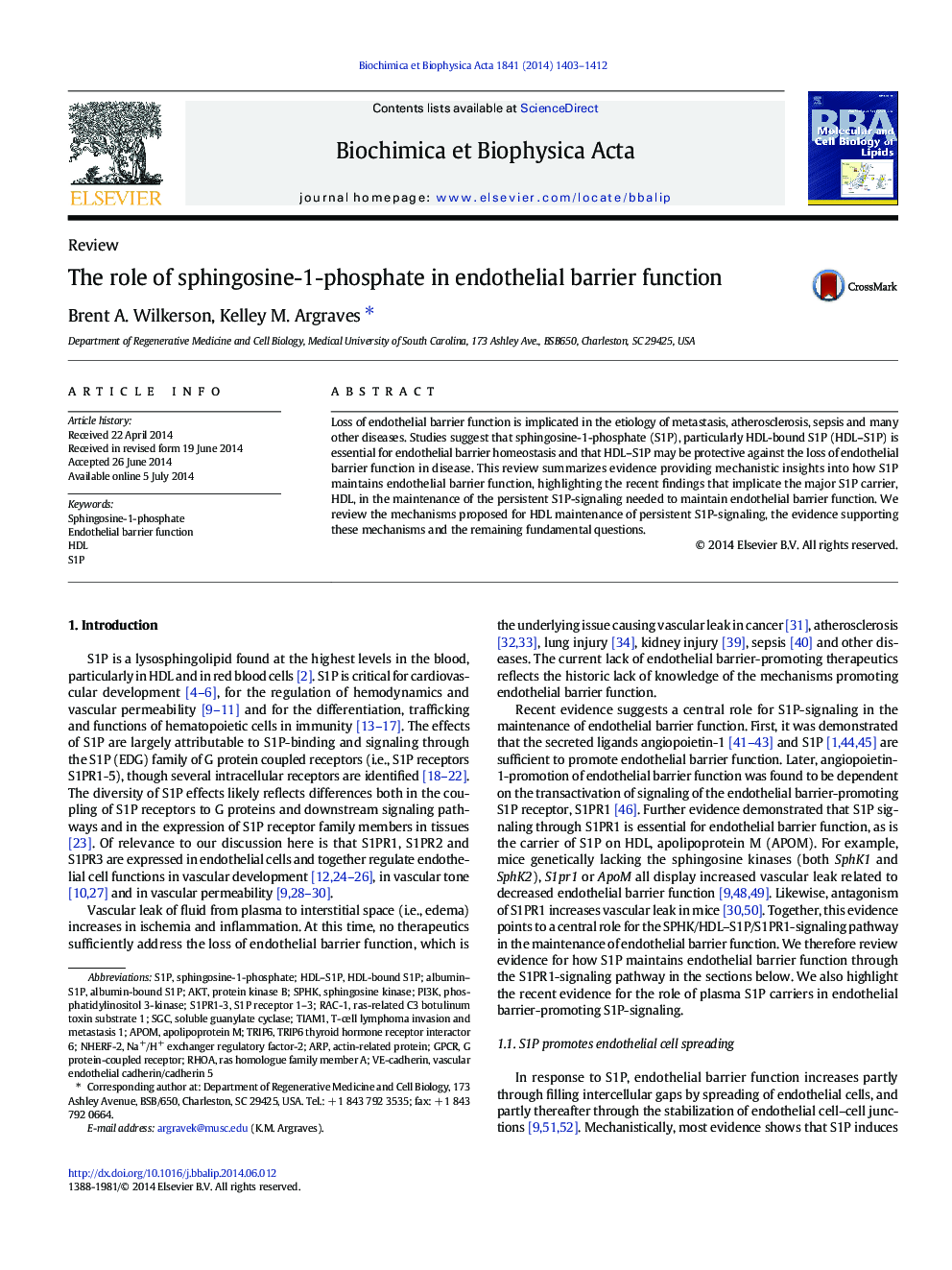| Article ID | Journal | Published Year | Pages | File Type |
|---|---|---|---|---|
| 8302196 | Biochimica et Biophysica Acta (BBA) - Molecular and Cell Biology of Lipids | 2014 | 10 Pages |
Abstract
Loss of endothelial barrier function is implicated in the etiology of metastasis, atherosclerosis, sepsis and many other diseases. Studies suggest that sphingosine-1-phosphate (S1P), particularly HDL-bound S1P (HDL-S1P) is essential for endothelial barrier homeostasis and that HDL-S1P may be protective against the loss of endothelial barrier function in disease. This review summarizes evidence providing mechanistic insights into how S1P maintains endothelial barrier function, highlighting the recent findings that implicate the major S1P carrier, HDL, in the maintenance of the persistent S1P-signaling needed to maintain endothelial barrier function. We review the mechanisms proposed for HDL maintenance of persistent S1P-signaling, the evidence supporting these mechanisms and the remaining fundamental questions.
Keywords
PI3KHDLRhoAARPapoMGPCRTrip6S1PSphKSGCTiam1VE-cadherinApolipoprotein MAktSphingosine kinaseSphingosine-1-phosphateEndothelial barrier functionRac-1Ras-related C3 botulinum toxin substrate 1Soluble guanylate cyclasePhosphatidylinositol 3-kinaseActin-related proteinprotein kinase BG protein-coupled receptor
Related Topics
Life Sciences
Biochemistry, Genetics and Molecular Biology
Biochemistry
Authors
Brent A. Wilkerson, Kelley M. Argraves,
